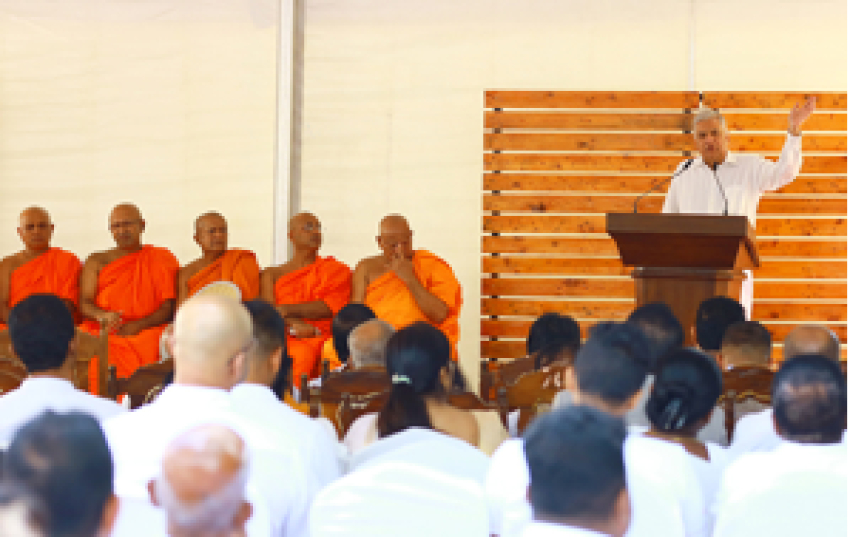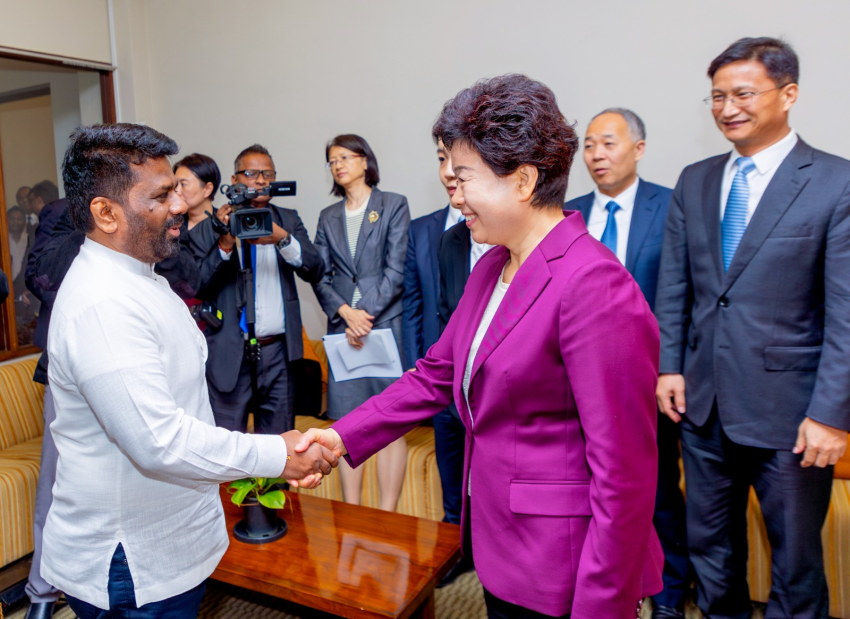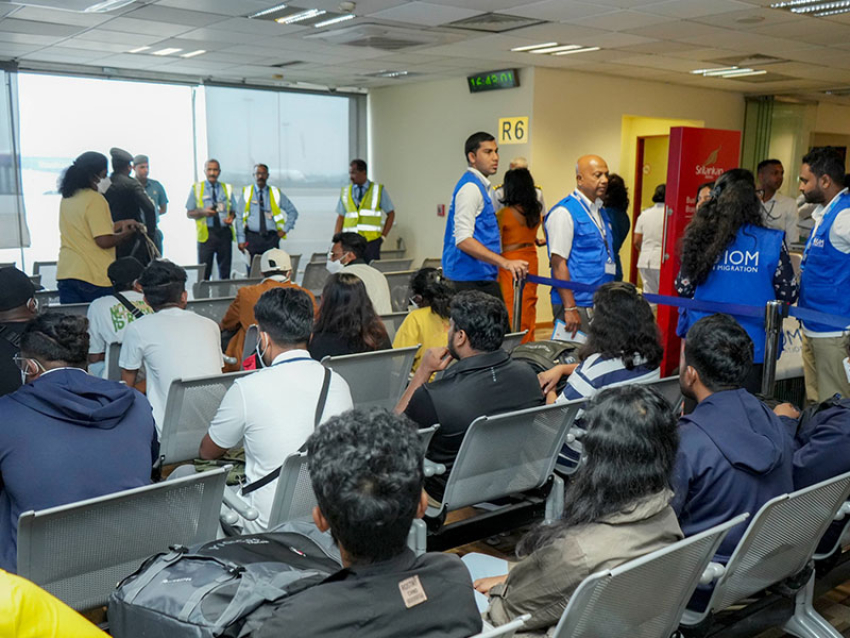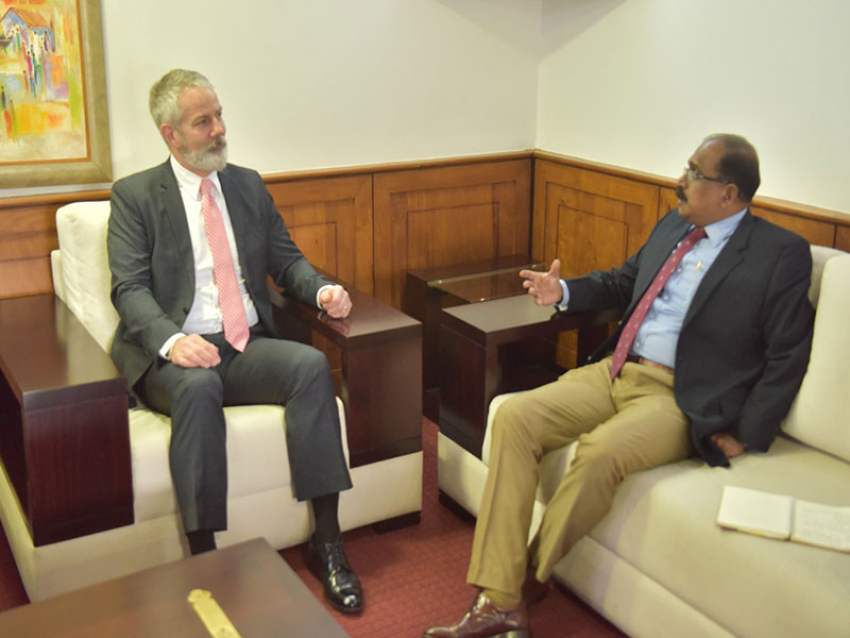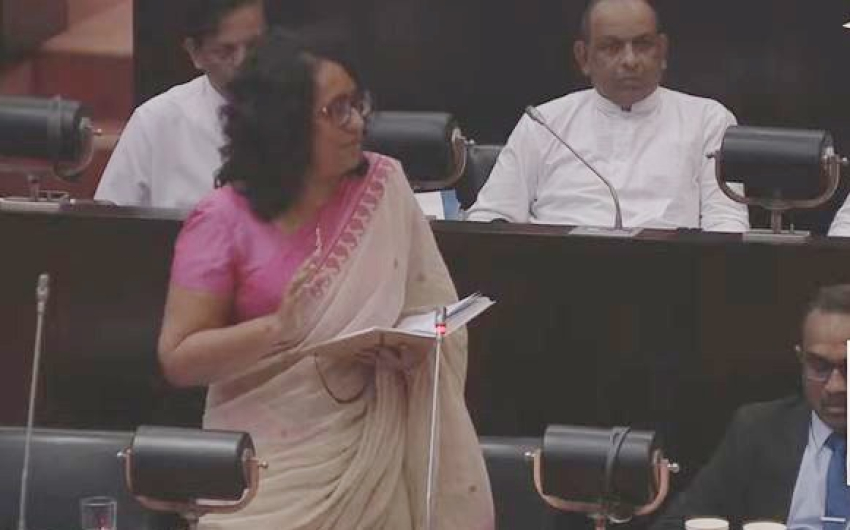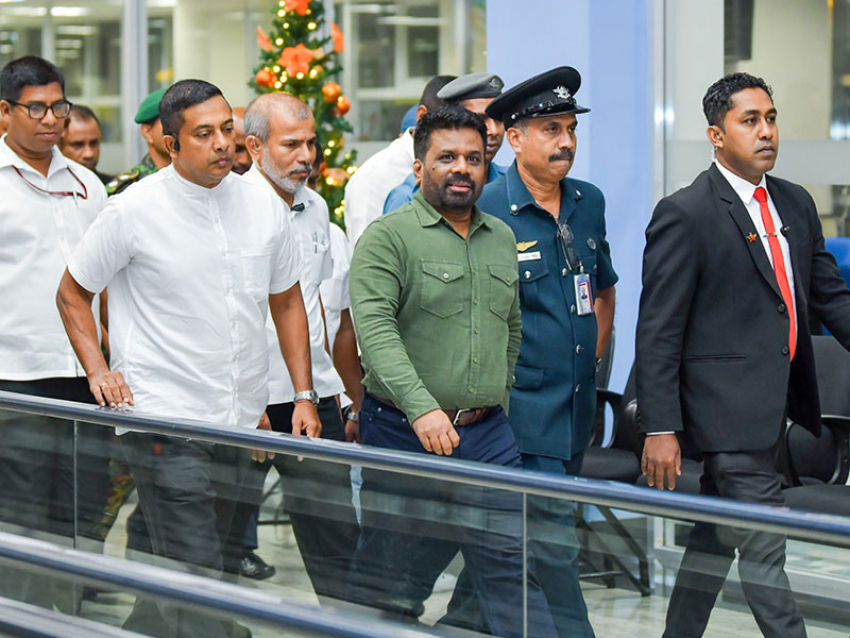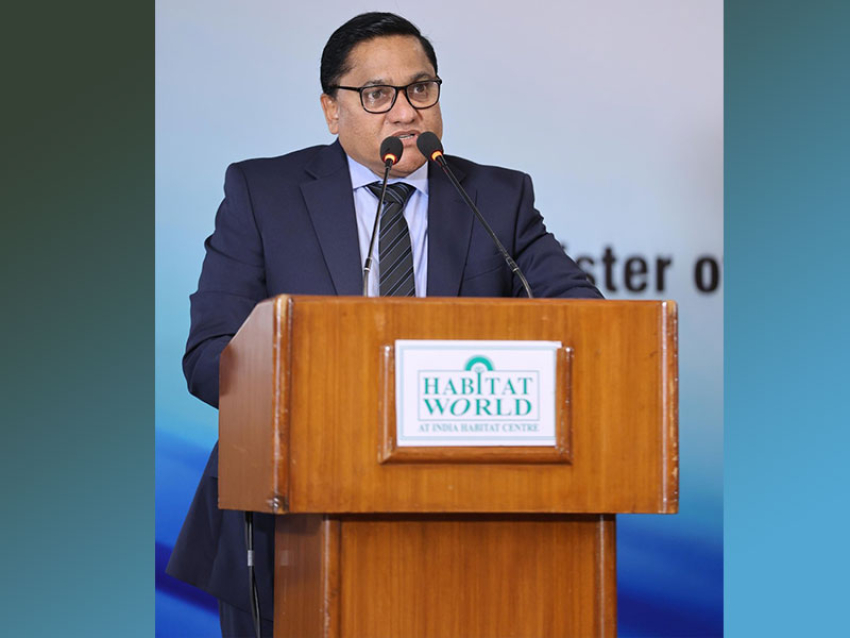Reflecting on his early political career in the Biyagama Constituency, where the region experienced notable underdevelopment, the President emphasized the positive impact of strategic economic decisions, particularly the establishment of the Biyagama Investment Zone. He noted that Biyagama’s rapid progress stands as a testament to those decisions.
The President underscored his vision for replicating such success nationwide by leveraging the advantages of an open economy. He expressed plans to establish new investment zones across the country, with the aim of significantly boosting the national economy.
The President made these remarks during the inauguration of the newly constructed ancient Bodhi Prakaraya and Golden Fence at Sapugaskanda Abeysekararama, this morning (25).
This religious program was organized by Deputy Incumbent of Sapugaskanda Abeysekararamaya and Sanchi Chethiyagiri Viharaya Ven. Banagala Vimalatissa Thero under the leadership and guidance of Chief Incumbent of Sapugaskanda Abeysekararama , Mahabodhi Agrasravaka, Sanchi Chetiyagiriya Vihara (India) Lanka Jee (Japan), Chairman of Sri Lanka Mahabodhi Society and Yoshida Educational and Social Services Foundation in Japan Ven. Banagala Upatissa Thera .
Following his visit to the temple, President Ranil Wickremesinghe proceeded to the Buddha Mandir, where he participated in religious ceremonies. Additionally, he unveiled a commemorative plaque and inaugurated the recently constructed Bodhi Prakaraya and Golden Fence at Sapugaskanda Abeysekararama.
Subsequently, the President paid a visit to Venerable Bhanagala Upatissa Nayaka, receiving his blessings during the discussions.
President Ranil Wickremesinghe, further stated,
“Abeysekararama held a significant position in this area. My first visit to this place was in my capacity as the Biyagama Constituency Organizer and the United National Party’s candidate for Biyagama. During that time, Biyagama was characterized by significant underdevelopment.
Some individuals suggested that only Agalawatta surpassed Biyagama in terms of underdevelopment. However, it was pointed out that Agalawatta had tea plantations, rubber plantations and tea factories, whereas Biyagama only had an oil refinery.
Some claimed that this constituency lacked economic activity, resembling more of a bedroom where people left in the morning only to return in the evening to sleep. Despite these perceptions, during those elections, I resided in a house nearby. My office operated from a building on the land adjacent to Abeysekararama.
Additionally, my mother advised us to visit Abeysekararama on the night before the general election to seek blessings. Consequently, I visited this temple, met Ven. Ther and received blessings.
I won’t reiterate the election results. My political journey began here, culminating in the presidency through unconventional means. I assumed this responsibility when the government collapsed and there was a void in leadership.
Taking charge during a period of economic ruin, where people struggled for survival without essential resources like fuel and gas, I felt compelled to step in. Recognizing the imminent threat to the country, I assumed the presidency with the conviction that I could rescue and rebuild our nation.
Two years have elapsed and today we are steadily returning to normalcy, with no shortages in sight. Rebuilding the economy posed challenges, but we are making gradual progress.
During my visit to Switzerland, I informed world leaders that Sri Lanka’s once-bankrupt economy has successfully rebounded, surprising many with the rapid turnaround. Engaging with the heads of the World Bank and the International Monetary Fund, we achieved economic stability, yet our revenues remain insufficient. To address this, we must enhance the country’s income, transitioning from a negative to a positive economic trajectory.
To generate employment opportunities, it is imperative to establish new industries and investment prospects. Efforts are underway to cultivate a conducive environment for this purpose, with plans to replicate successful models like the Biyagama Free Trade Zone throughout the country, aiming to amplify the nation’s economic growth tenfold.
Biyagama serves as an illustrative example. Despite its initial lack of development, the belief in its potential for growth under an open economy prevailed. Inspired by the success of the first investment zone in Katunayake initiated by late President J.R Jayawardena, efforts were made to designate Biyagama as the second Free Trade Zone, overcoming scepticism about its development potential.
Initiatives were undertaken to launch the Biyagama Free Trade Zone and enhance infrastructure in the region.
From its early days as an underdeveloped province, Biyagama has evolved into a thriving hub today, and the Biyagama and Katunayake Free Trade Zones are now recognized as premier investment zones in South Asia. At the outset, Biyagama had only 15 factories, which has grown to 58 today. Additionally, the region now hosts 180 large factories and 275 medium and small factories. The economic landscape has transformed with the emergence of 4,227 shops, 597 canteens, 316 electrical shops, and 2 tourist hotels. This comprehensive economic development in Biyagama has also positively impacted the growth of Kelaniya.
Biyagama, taking full advantage of the open economy, has seen remarkable progress, while neighbouring areas like Kelaniya are also advancing. Future plans include the transformation of Dalugama, Kiribathgoda, Makola, Mawaramandiya, and Kadawata into significant economic hubs.
The development model applied to Biyagama is set to be replicated in other provinces across the island, including Bingiriya, Kandy, Hambantota, Trincomalee, and the North, aiming to amplify the national economy tenfold.
Chief Sanghanayaka of Japan Venerable Banagala Upatissa Thero, highlighted President Ranil Wickremesinghe’s deep connection with Sapugaskanda, describing it as his political stronghold and the place where he initiated his political journey. From his early days in politics to reaching the pinnacle as the President, Mr. Wickremesinghe’s ties with the area remain strong.
In his current role as the President, Mr. Ranil Wickremesinghe is visiting the temple today. It is worth noting that the former President late Mr. J.R. Jayawardena also visited the temple in the past, accompanied by Mr. Ranil Wickremesinghe. The primary objective of today’s visit is to inaugurate the Bodhi Wall.
The narrative emphasizes Mr. Wickremesinghe’s significant contributions to elevating the living standards in Biyagama. Through initiatives such as transforming the area into a Free Trade Zone, establishing new schools and enhancing educational opportunities, he has garnered enduring affection from the people of Biyagama.
The ceremony was attended by the Maha Sangha, headed by Venerable Thiniyawala Palita Nayaka Thero, Minister Dr. Wijedasa Rajapakse, Japanese Deputy Ambassador to Sri Lanka Katsuki Kotaro, former Minister Ravi Karunanayake staff and the students from Yoshida International School, and local residents.

